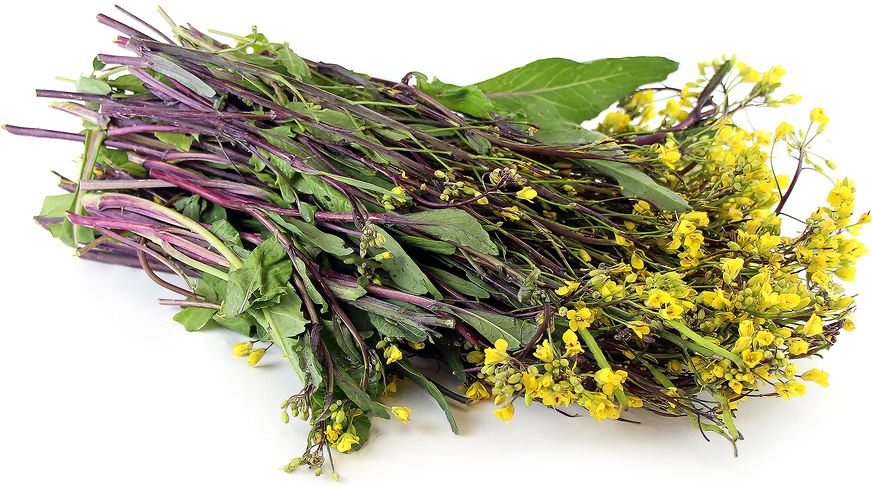


Choi Sum Flowers
Estimated Inventory, bunch : 0
Description/Taste
Choi Sum is a leafy vegetable that produces tender fleshy stalks 20-30 cm high. Its greens range from light to dark green and have an elongated oval shape with slightly serrated margins. The small yellow flowers first appear as green buds in loosely compacted clusters of 10-20. They open to expose four bright yellow petals that form a distinctive “cross” shape once the plant has about 7 or 8 mature leaves. Choi Sum flowers offer little aroma but are mildly sweet and peppery on the palate with flavors of baby spinach and mustard.
Seasons/Availability
Choi Sum flowers are available year-round.
Current Facts
Choi Sum, or Choy Sum, is a flowering vegetable in the Brassica family that may also be referred to as Tsoi sum and Cai xin (Chinese), Cai ngot (Vietnamese), Pakauyai (Thai), Saishin (Japanese) and False Pak Choi. It is botanically classified as Brassica rapa var. parachinensis which literally means "vegetable heart". The flowering stage of most vegetables usually signifies that that plant has matured past its prime and has become bitter and fibrous, but not so with Choi Sum. Since it grows at such a fast rate, by the time it bolts into flower production the leafy greens and tender stalks are still very young and succulent. Therefore, when compared to other cruciferous vegetables it is more common to see Choi Sum in the markets with its yellow flowers intact.
Applications
Choi Sum flowers are commonly found intact among the plant’s tender green stalks and leafy greens. They may be removed and eaten raw by themselves or mixed into salads but are typically left on the stalk and the entire plant is cooked whole. Flowering Choi Sum may be stir-fried, steamed, blanched or added to soups. Complimentary flavors include garlic, sesame, lemon, chicken stock, soy sauce and Chinese cuisine.
Geography/History
Choi Sum is a cool season vegetable native to mainland China. It is one of the most important leafy vegetables in South China. At least 30 distinct varieties are cultivated there, specifically selected based upon the number of days it takes each variety to mature. Outside of China and Japan, Choi Sum is less relevant. It is cultivated in Asian farming communities throughout the Western hemisphere only where it readily adapts to uniform climatic and soil conditions.




